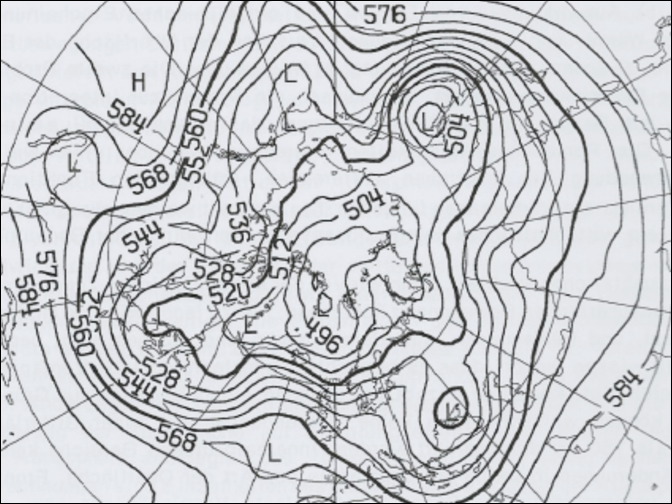

The speakers at an event held at the Centre on 25 June to mark ECMWF’s 40th anniversary noted the “stunning” advances made in numerical weather prediction (NWP) over the last four decades and set out the challenges that lie ahead.
Several held up ECMWF as an example of what can be achieved through international collaboration.
Timing “perfect”
Professor Lennart Bengtsson, the Director of ECMWF from 1981 to 1990, opened the series of six afternoon talks in the Centre’s lecture theatre before an audience of Council members, invited guests and staff.
His broad sweep of the history of NWP began with Vilhelm Bjerknes, who noted the possibility of forecasting the weather using the laws of physics and our knowledge of the current state of the atmosphere as early as 1904.
By the 1970s, a lot of progress in developing these ideas had been made, more observations of the atmosphere were becoming available, and a breakthrough in computing was on its way.
But these were only some of the reasons why the time for something like ECMWF had come, Lennart believes.
“The timing was perfect. There was a strong need for European cooperation. Many of the leading individuals in Europe had experienced a war during their formative years and they wanted something very different,” he said.
Forty years later, “the Centre has achieved more than was expected or promised.” Maintaining its leading position in predictive skill for so many years is a “fantastic achievement”, Lennart said.
“Shining example”
Michel Jarraud, the Secretary-General of the World Meteorological Organization (WMO), said ECMWF shows what can be achieved through international collaboration.
“Internationally, no country can do it alone, and Europe is a shining example of the benefits of putting resources together to get much more than any of you could get individually, at the national level,” he told an audience including representatives from many European nations.
Emphasizing the need to help developing countries in the area of numerical weather prediction, he added: “You have things available now which do not cost anything to make available more widely.”
Michel concluded by urging ECMWF to remain a “jewel” of international cooperation at a time when the emphasis was increasingly on ‘subsidiarity’ and ‘networking’ rather than bringing people from many nations together in a single Centre.
Professor Sarah Jones, the Head of Research and Development at the German Meteorological Service (DWD), drove home the message by highlighting how Member and Co-operating States benefit from research, training, and the infrastructure provided by ECMWF, as well as from its forecasts.
She cited the examples of collaborative work with ECMWF Fellows Professor Rupert Klein and Professor Tilmann Gneiting on numerical methods and statistical post-processing.
“It’s obvious that Member States benefit enormously” from scientific advances made at the Centre and vice versa, she said.
At the cutting edge
Dr Florence Rabier, ECMWF’s Director of Forecasts, gave a talk on the importance of optimally combining observations with short-range forecasts to arrive at the best possible representation of the current state of the atmosphere – a process called data assimilation.
She said one of the Centre’s main achievements in the nineties was the development of a data assimilation technique called 4D-Var.
Today we are “at a crossroads” as ensemble-based techniques are coming to the fore. “It’s difficult to know what kind of mix we’ll have in ten or 20 years’ time,” Florence said.
The Head of ECMWF’s Numerical Aspects Section, Dr Nils Wedi, emphasized the need for cutting-edge research to stay ahead of the game.
“We can see things on the horizon that make us rethink certain strategies and certain ways of developing the model in the future,” he said.
The biggest challenge is to work towards “much more energy-efficient, environmentally friendly, exascale numerical weather prediction” that can run efficiently on tomorrow’s supercomputer architectures, Nils added.
This way to the future
Professor Alan Thorpe, the Director-General of ECMWF, concluded the series of lectures with a talk on the way ahead for numerical weather prediction in general and ECMWF in particular.
Alan began by pointing out some “stunning” changes in NWP over the last 40 years. NWP has seen a “quiet scientific revolution” in that period by extending the skilful forecast range from barely two days to seven and more. “Collaboration has been the secret of ECMWF’s success,” he said.
He went on to identify four aspects crucial to the future: introducing high-resolution ensemble forecasts; developing an Earth system model; ensuring the scalability of NWP processes; and providing environmental information rather than just weather predictions.
Of these, he singled out the first. High resolution is important to reduce errors, and ensembles are important because they can tell us what confidence we can have in a forecast, Alan pointed out.
“High-resolution ensembles are critical,” he said, adding: “I’m making a personal statement here because I think this is the way the science is going.”
Alan concluded his lecture with a plea: “We need the Members States to have the vision to boldly go and move ECMWF and the European meteorological infrastructure forward. The founders of ECMWF in 1975 had that vision, there is no question about that. Today we need to have the belief that the founders were right.”
